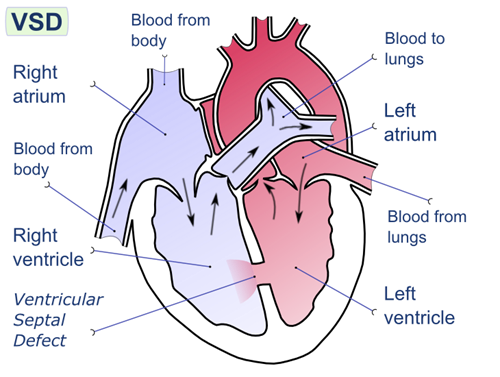Before administering a scheduled dose of insulin to a 10-year-old child who is learning diabetic self-care, which information is most important for the practical nurse (PN) to ask the child?
Did the child perform a fingerstick?
How much did the child exercise today?
When did the child last urinate?
Has the child eaten recently?
The Correct Answer is A
A. Checking the child’s blood glucose level via fingerstick is the most important step before administering insulin to prevent hypoglycemia or ensure the appropriate dose.
B. Exercise affects blood sugar, but the immediate priority is verifying the blood glucose level.
C. Urination patterns can indicate hyperglycemia, but they are not the most critical factor before insulin administration.
D. Eating is important, but insulin dosing should be based on blood glucose readings and meal intake combined.
Nursing Test Bank
Naxlex Comprehensive Predictor Exams
Related Questions
Correct Answer is B
Explanation
In infants with heart failure, they may have difficulty feeding due to fatigue and increased work of breathing. Allowing the infant to rest before feeding helps conserve their energy and reduces the risk of excessive fatigue during feeding.

The other options are not appropriate interventions for this situation:
A.Weigh before and after feeding: Weighing before and after feeding is not necessary in this case unless specifically ordered by the healthcare provider. It is not directly related to the management of feeding an infant with heart failure.
C.Feed the infant when he cries: Feeding the infant solely based on crying may not be appropriate in this case. It is important to establish a feeding schedule and monitor the infant's signs of hunger and satiety to ensure adequate nutrition and prevent overfeeding.
D.Insert a nasogastric feeding tube: Inserting a nasogastric feeding tube should not be the first intervention unless there is a specific indication or order from the healthcare provider. In this scenario, the focus is on supporting oral feeding and allowing the infant to rest before feeding.
Correct Answer is D, C, A, B
Explanation
- A 12-year-old child with a history of asthma is wheezing and complaining of shortness of breath. Wheezing and shortness of breath indicate respiratory distress, which can be a medical emergency for a child with asthma. Prompt intervention and assessment of the child's respiratory status are crucial.
- A 7-year-old child who has type 1 diabetes mellitus is experiencing extreme hunger and shakiness. These symptoms may indicate hypoglycemia, which requires immediate attention to prevent further complications. The PN should assess the child's blood glucose levels and provide appropriate treatment.
- A 10-year-old child with bleeding lacerations on both knees after falling on the playground. While bleeding lacerations require attention, they are not immediately life-threatening or likely to cause severe complications. However, the PN should still address this child's injuries promptly and provide appropriate wound care.
- A 5-year-old child is crying uncontrollably because of an incontinent bowel episode. While the child's distress is significant, it does not indicate an immediate life-threatening condition or urgent medical need. The PN should provide comfort, and reassurance, and assist with appropriate hygiene measures for the child.
Prioritizing care in this order ensures that the most urgent and potentially life-threatening conditions are addressed first, followed by those requiring immediate attention but with a lower risk of complications. Finally, the PN can attend to the client with a condition that, while distressing, is not immediately life-threatening or urgent.
Whether you are a student looking to ace your exams or a practicing nurse seeking to enhance your expertise , our nursing education contents will empower you with the confidence and competence to make a difference in the lives of patients and become a respected leader in the healthcare field.
Visit Naxlex, invest in your future and unlock endless possibilities with our unparalleled nursing education contents today
Report Wrong Answer on the Current Question
Do you disagree with the answer? If yes, what is your expected answer? Explain.
Kindly be descriptive with the issue you are facing.
